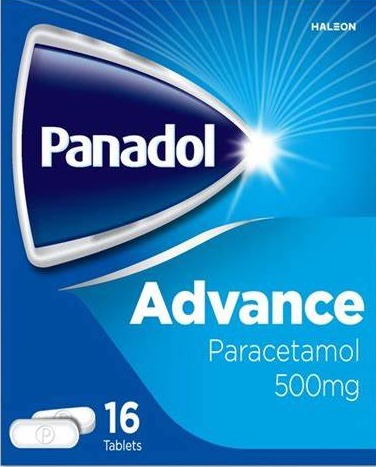Acetaminophen

Choose pharmacy
Regular Price
₦9,360.00
CureCurate Price
₦7,800.00

DophineAcre
telle telle 34, long island
Operation Hours
8:00 AM - 9:00 PM
Estimated Wait Time
15-20 minutes
CureCurate Gold Member?
Save up to 20% more on all your prescriptions
Before Using Acetaminophen
Acetaminophen (Tylenol) is an over-the-counter (OTC) medication used to lower fever and relieve mild pain in adults and children. It's available in many strengths and formulations, such as Acetaminophen (Tylenol) is an over-the-counter (OTC) medication used to lower fever and relieve mild pain in adults and children. It's available in many strengths and formulations, such as tablets, chewable tablets, and liquid. In general, acetaminophen (Tylenol) works within 45 minutes when it's taken by mouth. This medication typically doesn't have many side effects. It's recommended to limit or avoid alcohol while taking acetaminophen (Tylenol) to lower your risk for liver problems. What is Acetaminophen (Tylenol) used for? How Acetaminophen (Tylenol) works Acetaminophen (Tylenol) is an analgesic. The exact way the medication treats pain and fever isn't completely known. But it's thought to work by stopping the production of certain chemicals in your brain and nervous system.
Dosages for Acetaminophen
There are several manufacturers that make acetaminophen (Tylenol) in different strengths and formulations (e.g., pill, chewable tablet, liquid, powder, rectal suppository). The dose will depend on your age, body weight...
There are several manufacturers that make acetaminophen (Tylenol) in different strengths and formulations (e.g., pill, chewable tablet, liquid, powder, rectal suppository). The dose will depend on your age, body weight (for children), the strength and formulation you're using, and your risk for liver problems.
Follow your provider's instructions or the directions on the medication box. Below are some examples of acetaminophen (Tylenol) formulations and their dosing instructions. Keep in mind that this list doesn't include all available acetaminophen (Tylenol) products.
- Acetaminophen 325 mg (regular strength) capsule or tablet
- Age 12 years and older: The typical dose is 2 pills (650 mg) by mouth every 4 to 6 hours while symptoms last. Don't take more than 10 pills (3,250 mg) within a 24-hour period nor use for longer than 10 days unless instructed by your provider.
- Age 6 to under 12 years: The typical dose is 1 pill (325 mg) by mouth every 4 to 6 hours while symptoms last. Don't take more than 5 pills (1,625 mg) within a 24-hour period nor use for longer than 5 days unless instructed by your child's provider.
- Age under than 6 years: Ask your child's provider.
- Acetaminophen 500 mg (extra strength) caplet, gelcap, or dissolvable powder packets
- Age 12 years and older: The typical dose is 2 pills or powder packets (1,000 mg) by mouth every 6 hours while symptoms last. Don't take more than 6 pills (3,000 mg) within a 24-hour period nor use for longer than 10 days unless instructed by your provider.
- Age under than 12 years: Ask your child's provider.
- Acetaminophen 160 mg/5 mL oral suspension: Each 5 mL contains 160 mg of acetaminophen.
- Age 12 years and older: The typical dose is 20 mL by mouth every 4 hours while symptoms last. Don't take more than 5 doses (100 mL) within a 24-hour period nor use longer than 10 days unless instructed by your provider.
- Age 2 to under 12 years or weigh 24 to 95 pounds: The dose depends on your child’s age and body weight, so please check for detailed instructions on the packaging. The typical dose ranges from 5 mL to 15 mL by mouth every 4 hours while symptoms last. Don't give your child more than 5 doses nor use for longer than 5 days unless instructed by your child's provider.
- Age under 2 years or weigh less than 24 pounds: Ask your child's provider.
Read the articles below for more information on:
- Dosages for difference acetaminophen formulations
- Acetaminophen dosages for adults
- Acetaminophen dosages for children
Acetaminophen is also available as an injection into the veins (also called intravenous or IV).